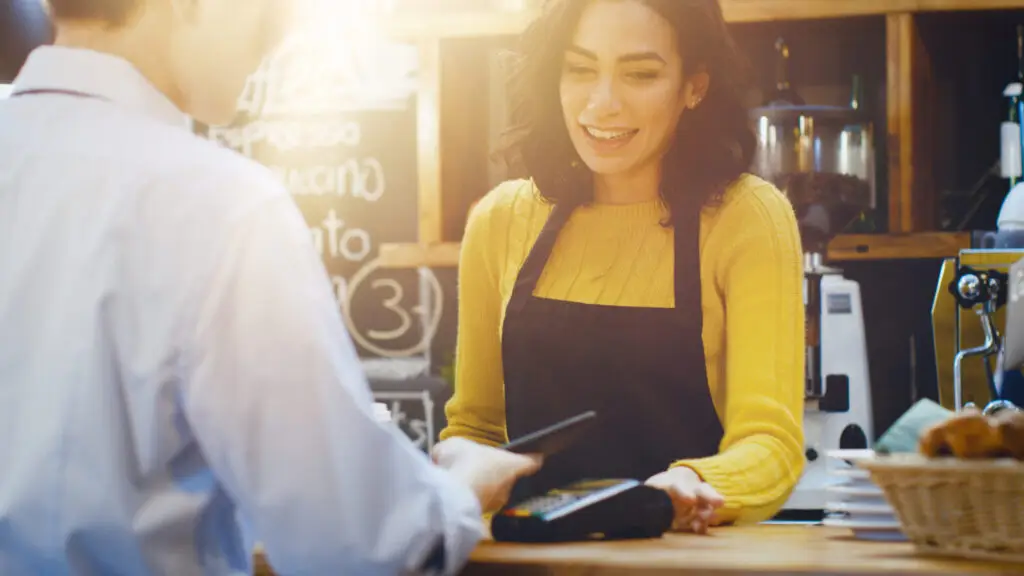Advances in point of sales (POS) technology are contributing to a frictionless, more enjoyable experience for customers, both in-store and online. With the rise in Click & Collect shopping (15% of ecommerce orders are now C&C – almost double the 2019 figure), as well as shops selling in both physical stores and online (around a third of B2C retailers), a seamless omnichannel approach is needed.
Almost 50% of retailers see unifying their online and in-store data as their biggest challenge – and, with it, comes the knock-on effects on customer experience. So, what can be done?
New retail POS software is being used across the globe to create a data-driven, customer-centric approach to managing transactions and stock across omnichannel retailers. Here’s how it benefits both businesses and their consumers…
Correct Stock
With around 20% of online sales being returned, both ecommerce and omnichannel retailers share a similar challenge – monitoring stock levels.
Being able to update stock based on in-store and online sales and returns, at the same time, is tricky. Evolving POS software is able to track stock across all sales areas.
With detailed reporting on both low stock levels and wastage, retailers can gauge how much to order – or, even better, enable the auto-billing feature on their retail POS system. This ensures that as soon as stock levels dip to a pre-determined level, suppliers are notified and the correct levels of new stock are ordered automatically.
Having more control over stock levels means a better customer experience – products are less likely to sell out and customers won’t suddenly lose an item from their online basket just before they pay. Increased availability means increased faith in a business to deliver what’s needed.
Promotions and Price Alerts
Running multiple promotions at a time is hard enough, let alone trying to base them on different location data and stock levels.
New retail POS solutions allow you to add promotions across the day based on stock levels and the probability of selling out. If your bakery isn’t selling as many croissants as normal, your POS system alerts you to this and suggests a promotion to increase the likelihood of selling them before they become wasted stock.
Retailers can also add prompts to tills so that staff remember to highlight certain promotions to customers based on what they’re buying. The software also auto-calculates the promotional savings or lets customers know what else to buy to achieve a saving – for example, buying a 4th item to make the most of a ‘4 for £5 deal’ that they may not have been aware of.
Many retailers have multiple sites for their shops – evolving retail POS systems enable them to set different prices or promotions for each site, based on relative footfall, transaction data, and pricing (eg London weighting, airport prices, local sites versus supermarket sites).
Customers benefit from clear, available promotions, and can receive targeted, tailored marketing comms that enhance their buying experience.
Staff Availability to Help
The combination of a tech-led journey resulting in quicker service and less reliance on staff who can then be deployed to do more valuable, complex jobs is an enticing prospect for many businesses.
By automating features that previously required man-hours, staff are more available to assist at other stages of the customer journey. Helping those who are browsing, ensuring shelves or rails are fully stocked, and offering a personal experience where possible.
Speed of Purchasing
Self-checkouts are increasingly commonplace across UK retailers, accounting for 55% of grocery store transactions in 2022.
In addition to achieving a prompt return on investment, two of the major advantages that self-checkouts bring are speed and ease of access; both factors that are appealing to consumers in the convenience-led society we live in today. When it comes to workplace hospitality or retail settings, consumers are far more likely to be willing to purchase items where there are little to no queues, as opposed to somewhere that has a queue running out the door.
Our data shows us that the average transaction takes around six seconds when using a self-checkout. Given that multiple kiosks can be set up in any area, it’s easy to see how queues can be eradicated completely.
Rewarding Loyalty
With ever-evolving consumer behaviour, one thing remains clear – loyalty deserves rewards.
Using a POS solution that tracks your customers’ behaviour means you have more insight into how they interact with your products. Through customisable apps, retailers are able to reward customers, offer bespoke promotions, and track their transactions.
Data insights and increased brand awareness? It’s a win-win.











